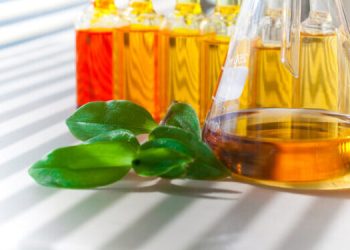“Bad Bunkers” have become a buzzword in shipping industry; especially after multiple vessels reporting problems with contaminated fuels in Houston, Singapore and Panama during 2018. Phenolic compounds were present in every sample which damaged the ships’ engines.
In SAFETY4SEA October issue, we broached the matter of contaminated fuels and the subsequent worries regarding quality, while INTERTANKO warned that fuel contamination may become a ‘global epidemic’.
“If those responsible for providing good, lasting quality fuels … show the same lack of interest as shown so far in addressing and solving the root causes of current contamination problems, the 2020 landscape only looks more troublesome for ship owners,” has said Dragos Rauta, technical director, Intertanko, according to a Reuters article.
Indeed, it seems like, not enough methods were put in place to detect such issues, as no profound resolution has been reached yet. This is of high importance towards the 2020 Sulphur Cap that puts pressure on the industry to provide clean fuel. Specifically, the new sulphur emission regulations set the quality of fuel as paramount, while greater responsibility is going to fall on crew members to ensure that fuel onboard adheres to the regulations and is contaminant free.
“This spike will increase the risk of contamination,” argues Lars Robert Pedersen of BIMCO.
The IBIA, ISO 8217 and Regulation 18.3 of MARPOL Annex VI, refers that fuels should not contain any harmful materials. However, they do not necessarily show if the fuel is contaminated…
2020 fuel oils considerations
According to IMO, although the newer blended fuels which are under development in preparation for 2020 are not yet available in the market, concerns have been raised about these fuels, which will be compliant with the 0.50% m/m sulphur limit but which may differ in their composition from supplier to supplier and port to port. This could potentially lead to compatibility and mechanical problems.
There is no guarantee that a ship bunkering 0.50% m/m sulphur at a European port will then be able to pick up a compatible fuel as it goes east, even if ordering from the same fuel supplier. It is expected that there will be regional variation between how compliant fuels are blended. Some regions are expected to provide a 0.50% m/m solution based primarily on fuel oil, whilst others are expected to provide distillate-based solutions
Blended Fuels: What risks they pose to industry
Contaminated fuel, the so-called dirty fuel, contains additive at the concentration used in the fuel, or any added substance or chemical waste that can cause harm to ship engines in several ways like clogging pipelines and/or overwhelming fuel filters and subsequently jeopardize the safety of the ship and/or affect the performance of the machinery.
This is, therefore, considered a serious situation not only with regards to safety of the ship, but also the crew on board, while the economic cost can be also high. It is important to mention that not all the damages can be repaired at sea; there are cases have required vessels to return to port.
Did you know?
There are types of contaminated fuels that are hard to detect because they can pass industry standards, however they contain compounds that are not usually tested (i.e. high levels of styrene, phenols, plastic related compounds)
5 ways to avoid contaminated fuels
- Ensure good bunker management
- Always check historical records of bunker supplier
- Send samples for laboratory analysis
- Conduct regular monitoring of the engine function
- Avoid mixing fuels in storage tanks
Select a reliable supplier answering 2 simple questions:
- Has the supplier been involved in contaminated bunkers?
- Is he able to provide evidence of insurance for poor quality bunkers?
ISO 8217 aims to assure fuel quality
Following concerns among the industry’s stakeholders that ISO 8217 would not encompass future 0.5% fuels, in July 2018, ISO made a statement to clarify that new blends of bunker fuels will fit within the related fuel standard.
Namely, the organization confirmed that the General requirements of ISO 8217:2017 along with the characteristics included in Table 1 and 2 of ISO 8217: 2017 cover 2020 0.50% max Sulphur fuels in the same way as they cover today’s fuels including the 0.10% max, in an effort to reassure the industry that there would be not any significant safety issues if fuels become unstable or damage machinery.
Among others, ISO highlighted that flashpoint, stability and cold flow are the key fuel characteristics that must be addressed at fuel delivery.
‘’There is a specific concern on the fuel oil blends as modelled by CE Delft in the IMO fuel oil availability study, containing H-oil bottoms and the potential risk of obtaining unstable fuels if not properly blended. As with today’s fuels, all marine fuels delivered to ships shall be stable and meet the ISO 8217 total sediment potential requirement of 0.10% maximum, which provides the criteria to be met for fuel oil stability.’’ ISO stated.
The risk of incompatibility arises with the use of consecutive fuels from different ports and regions. Compatibility between different fuels cannot be guaranteed by the suppliers and it falls on the competency of the crew to manage this, ISO added. In this regard, ISO 8217 working group has taken steps to address important issues with respect to fuel quality, initiating also a test program which investigates potential instability of a wide range of different fuel blend formulation, due to be available in the market from late 2019.
What is more, CIMAC Fuels Association is further conducting investigation in support of the ISO 8217 committee to better understand the aforementioned cases, spread awareness and bring solutions.
Fuel concerns on IMO agenda
In the recent MSC 100, IMO agreed to address fuel safety concerns, following of a proposal put forward by Liberia and a group of shipping organisations. Namely, the Committee concluded that it should a more robust stance against fuel safety issues while it considered that the issue of fuel oil safety, which is currently regulated under MAPROL Annex VI, should be under MSC instead of MEPC, and possibly included into SOLAS.






























































